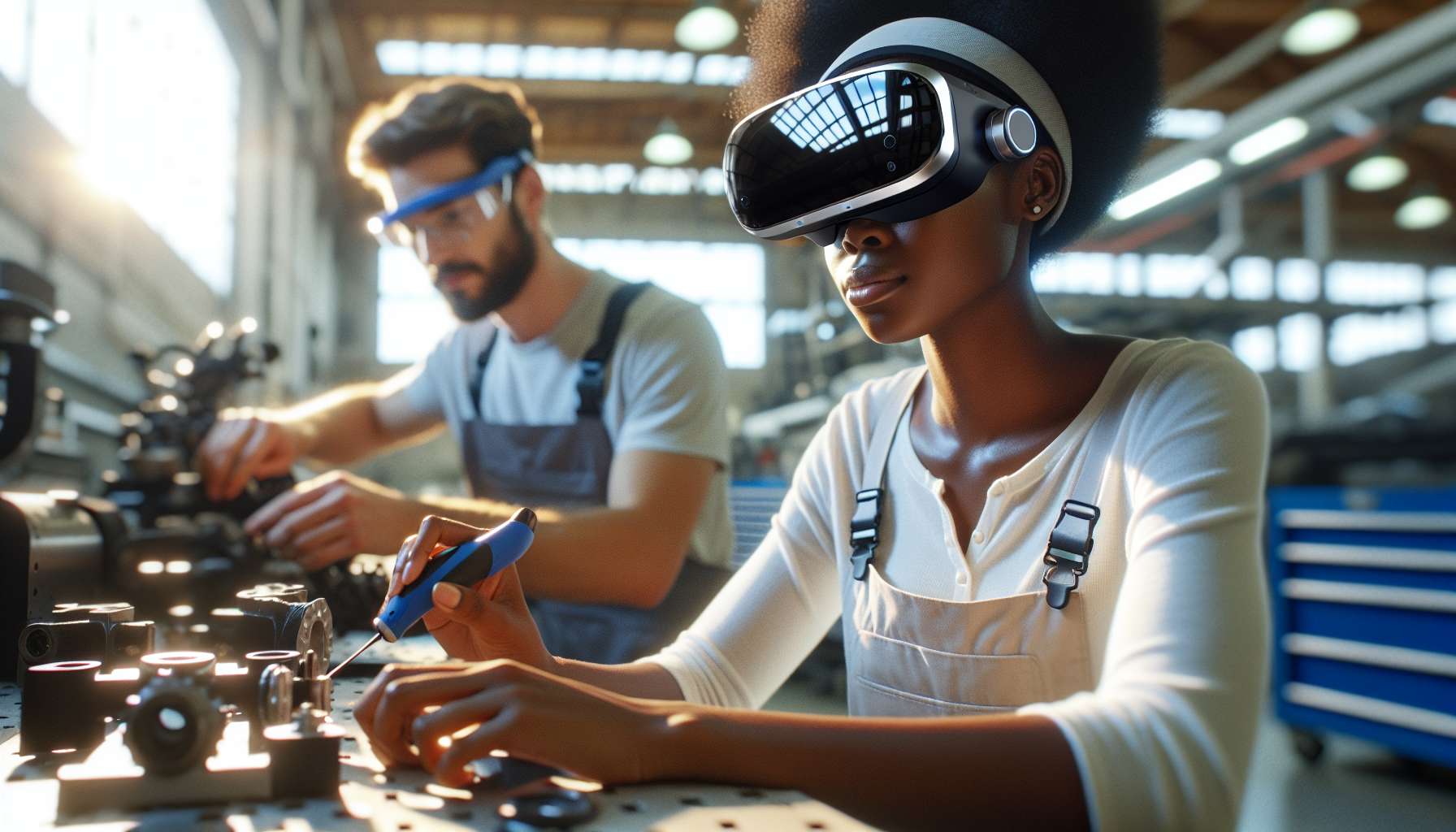Revolutionizing the Automotive Industry with Augmented Reality
When it comes to enhancing productivity in the automotive industry, one technology is making waves like never before: Augmented Reality (AR). By seamlessly blending the digital world with the physical, AR is transforming automotive operations and revolutionizing the way things are done. In this article, we will explore the role of AR in boosting productivity and how it is reshaping the automotive landscape.
Streamlining Assembly and Maintenance Processes
One of the key areas where AR is making a significant impact is in streamlining assembly and maintenance processes. With AR-enabled smart glasses or headsets, automotive technicians can access real-time information and step-by-step instructions right in their field of view. This eliminates the need for bulky manuals or referring to computer screens, allowing technicians to work hands-free and with increased efficiency.
AR also enables technicians to visualize complex components and systems in 3D, making it easier to identify and resolve issues. By overlaying digital information onto physical objects, AR provides a virtual guide, highlighting the exact location of parts, connections, and wiring diagrams. This not only reduces errors but also speeds up the overall assembly and maintenance process.
Improving Training and Skill Development
AR is also playing a crucial role in training and skill development within the automotive industry. By simulating real-world scenarios, AR allows trainees to practice and refine their skills in a safe and controlled environment. For example, technicians can use AR to learn how to diagnose and repair complex engine problems without the need for an actual vehicle.
AR-based training programs provide interactive and immersive experiences, enabling trainees to gain hands-on experience without the risk of damaging expensive equipment. This not only accelerates the learning process but also ensures that technicians are well-prepared to handle real-world challenges, ultimately improving productivity and reducing errors.
Enhancing Design and Prototyping
AR is not limited to just the assembly line or maintenance processes; it is also transforming the way automotive designs are created and prototyped. With AR, designers can visualize their concepts in a virtual environment, allowing them to make real-time modifications and improvements. This speeds up the design iteration process and enables faster decision-making.
AR also enables designers to collaborate remotely, regardless of their physical location. By sharing virtual prototypes, teams can work together in real-time, providing feedback and making adjustments on the fly. This not only saves time and resources but also ensures that the final product meets the highest standards of quality and performance.
Looking Ahead: The Future of AR in Automotive
The potential of AR in the automotive industry is vast and continues to expand. As technology advances, we can expect to see even more innovative applications of AR, such as augmented reality windshields, heads-up displays, and interactive dashboards. These advancements will further enhance driver safety, improve navigation systems, and provide a more immersive driving experience.
Furthermore, with the integration of Artificial Intelligence (AI), AR can analyze real-time data from sensors and cameras to provide drivers with valuable insights and alerts. From detecting potential hazards to optimizing fuel efficiency, AR-powered AI systems have the potential to revolutionize the way we drive and interact with our vehicles.
Conclusion
Augmented Reality is transforming the automotive industry, enhancing productivity, and revolutionizing the way things are done. From streamlining assembly and maintenance processes to improving training and skill development, AR is reshaping the automotive landscape. As we look ahead, the future of AR in the automotive industry holds immense potential, promising safer, more efficient, and immersive driving experiences. Embracing AR technology today will undoubtedly give automotive businesses a competitive edge tomorrow.





